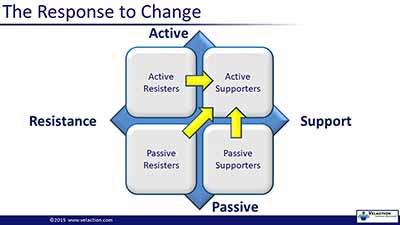| 🔍 > Lean Terms Directory |
Pseudo Support Disorder
Having the support of your team is critical to the development of your continuous improvement culture.
In most cases, that support, or lack of support is very obvious. When a person is on-board with a change, even if they are not a cheerleader for it, they tend to be open about it.
Some people who resist the change are also open about it, and can be, in fact, extremely vocal about opposing the change.
But some people who are against a change, however, tend to guard this fact more closely. This is especially true when they feel that their job is at risk. They tend to just keep quiet about things and quietly oppose the change.
In many cases, though, they will publicly accept the change. This disconnect between what it looks like a person believes, that they support the change, and the reality that they are against it is one of several Lean afflictions. It is known as Pseudo Support Disorder.

If you break support down into a matrix, you can see a spectrum of support vs. resist, and active vs. passive. Obviously, the goal is to have everyone become active supporters.

For pseudo support, you could have an active resistor intentionally pretending to support it while physically undermining the effort. This is extremely uncommon, to the point that I have never seen it in a project. I have yet to see a person intentionally sabotage a project.
Most active resistors are open about it. They may not be candid with their boss, but they certainly are with their peers. It is pretty easy to spot an active resistor.
The real problem for pseudo support is in the passive resistor.
They will sit in meetings nodding their heads or will bite their tongues when asked what they think of the change. They will put in the minimal effort asked of them when assigned a task. Because of this, they often look like supporters.
But when it comes time to take independent action, they will not act. This is the real harm of Pseudo Support Disorder. There is an expectation when a new process is implemented that the people doing the process will be vested in making it work. If there is a minor hiccup, they will address it and continue to improve the process, even after a project is complete.
But with pseudo support, that does not happen. Problems persist, and new processes never flourish.